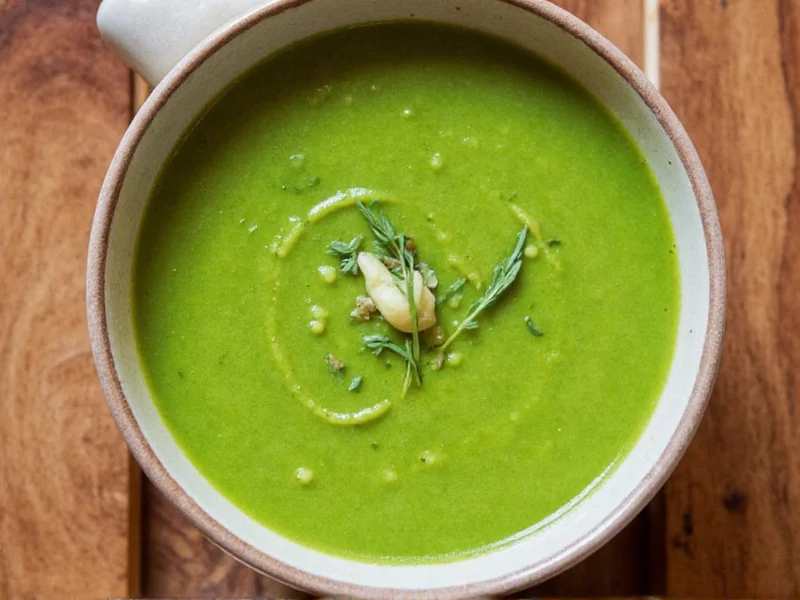For more than five decades, visitors to Solvang, California have lined up to experience the rich, hearty flavors of Andersen's Pea Soup. This beloved dish represents a perfect fusion of authentic Danish culinary tradition and California's agricultural bounty. Unlike standard pea soups, Andersen's version features a distinctive preparation method and ingredient balance that has remained consistent since the restaurant's founding.
The Danish Roots of Pea Soup Tradition
Pea soup has deep roots in Scandinavian culinary history, dating back to medieval times when dried peas provided essential nutrition during long winters. In Denmark, gule ærter (yellow pea soup) traditionally served on Thursdays accompanied by pork and mustard, represents one of the country's oldest national dishes. Danish immigrants brought these recipes to America, preserving culinary traditions while adapting to available ingredients.
Solvang, established in 1911 by Danish educators seeking to create a Danish colony in California, became the perfect setting for these traditions to flourish. The town's Danish architecture, bakeries, and cultural events created an environment where authentic recipes like pea soup could thrive while evolving with local influences.
What Makes Andersen's Version Distinctive
While many restaurants serve pea soup, Andersen's version stands apart through specific preparation techniques and ingredient choices. The soup features yellow split peas as its base, simmered slowly with smoked ham hocks that impart a distinctive flavor profile. Unlike many American pea soup variations, Andersen's recipe maintains the traditional Danish consistency—thick but not paste-like, with just enough broth to create a satisfying texture.
The secret to Andersen's distinctive flavor lies in the careful balance of ingredients and cooking time. The soup simmers for hours, allowing the peas to fully break down while the ham hocks contribute depth without overwhelming saltiness. This attention to detail creates a comforting dish that has drawn generations of visitors to Solvang.
| Feature | Traditional Danish Pea Soup | Andersen's Pea Soup Variation |
|---|---|---|
| Primary Pea Type | Yellow split peas | Yellow split peas |
| Meat Component | Salted pork or ham | Smoked ham hocks |
| Consistency | Thick, almost porridge-like | Thick but with discernible broth |
| Traditional Serving Day | Thursdays | Daily |
| California Adaptation | N/A | Locally sourced vegetables |
The Restaurant and Community Connection
Andersen's Restaurant opened its doors in Solvang in 1969, quickly establishing itself as a cornerstone of the community. The restaurant's commitment to preserving Danish culinary traditions while embracing California's agricultural abundance created the perfect environment for their signature pea soup to become legendary.
Solvang's unique cultural identity as "The Danish Capital of America" provides the ideal backdrop for this culinary tradition. The town's annual Danish Days festival, authentic windmills, and Danish-style architecture create an immersive experience where enjoying a bowl of traditional pea soup feels like stepping into another culture.
Experiencing Authentic Andersen's Pea Soup
Visitors to Solvang can experience Andersen's Pea Soup as it was meant to be enjoyed—in the restaurant's cozy dining room or on their charming outdoor patio. The soup is traditionally served with rye bread and pickled beets, following Danish custom. Many patrons enjoy it as a starter before exploring Solvang's shops and galleries.
While the exact recipe remains a closely guarded secret, food historians note that Andersen's version stays remarkably faithful to traditional Danish preparation methods while incorporating the high-quality ingredients available in California's Central Coast region. The result is a dish that feels simultaneously authentic and distinctly Californian.
Creating Your Own Danish-Style Pea Soup at Home
Though the exact Andersen's Pea Soup recipe isn't publicly available, home cooks can create a version that captures its essence by focusing on key elements:
- Use yellow split peas rather than green for authentic Danish flavor
- Select high-quality smoked ham hocks for depth of flavor
- Simmer slowly for at least 3-4 hours to develop proper texture
- Maintain a thick but not paste-like consistency
- Serve with dark rye bread and mild mustard
When preparing traditional Danish pea soup, remember that patience is essential. Rushing the cooking process results in peas that remain too firm or a broth that lacks depth. The magic happens through slow simmering that allows flavors to meld perfectly—a principle that explains Andersen's enduring popularity.
Cultural Significance in Modern Times
Andersen's Pea Soup represents more than just a menu item—it's a living piece of cultural heritage. In an era where food traditions often get diluted or commercialized, this dish has maintained its authenticity while becoming a symbol of Solvang's unique identity.
The soup's continued popularity demonstrates how food can serve as a bridge between cultures and generations. For Danish-Americans, it connects them to their heritage. For visitors, it offers an authentic taste of Danish tradition in the heart of California. This cultural preservation through cuisine makes Andersen's Pea Soup significant far beyond its ingredients.











 浙公网安备
33010002000092号
浙公网安备
33010002000092号 浙B2-20120091-4
浙B2-20120091-4